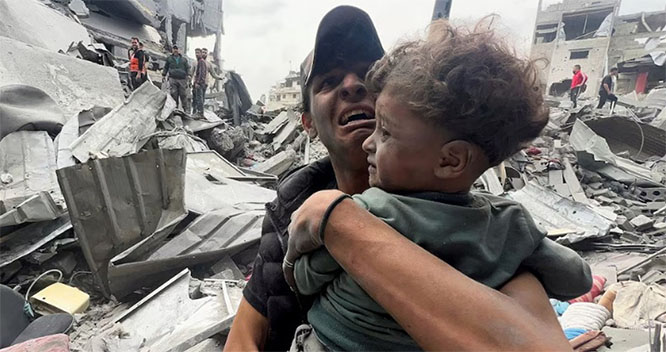
Millions of people across Iran and the world took to the streets on International Quds Day, expressing solidarity with Palestinians and condemning Israel’s actions in Gaza.
Brigadier General Ramezan Sharif, spokesperson for Iran’s Islamic Revolution Guards Corps (IRGC) and head of the Intifada Committee in Tehran, stated that rallies began at 10:00 a.m. local time (0630 GMT) in over 900 cities across Iran.
Demonstrators from various walks of life carried Iranian and Palestinian flags, as well as banners reading “Free Palestine” and “Al-Quds Must Be Liberated.” Flags of regional resistance groups, including Iraq’s Popular Mobilization Units (Hashd al-Sha'abi), Lebanon’s Hezbollah, and Yemen’s Ansarullah, were also displayed.
Mass rallies were held across West Asia, including in Iraq, Yemen, and Lebanon, as well as in other parts of the world.
Iranian Leaders Condemn Western Stance
Senior Iranian officials participated in the rally in Tehran, where Parliament Speaker Mohammad Baqer Qalibaf addressed the gathering.
“Iranians have taken to the streets in a massive show of support for Palestine and the Islamic Ummah,” Qalibaf said. “The Palestinian struggle is not just an issue for the Islamic world but a lesson for all of humanity.”
He criticized the West’s response to Israeli actions in Gaza, calling it a stain on Western civilization. “These crimes will be remembered as a lasting ignominy, exposing the West’s duplicity in human rights advocacy,” he added.
Qalibaf also defended the October 7, 2023, Palestinian attack on Israeli-occupied territories, describing Operation al-Aqsa Flood as a “rightful and legitimate response to 77 years of oppression by Israel, the U.S., and Britain.” He further described Israel as a “spare regime” dependent on U.S. support.
Quds Day: A Global Symbol of Resistance
Al-Quds Day, observed annually on the last Friday of Ramadan, was established in 1979 by the late Imam Khomeini to demonstrate solidarity with Palestinians and oppose Israeli occupation. The event has since become a symbol of resistance, with large rallies held worldwide, particularly amid Israel’s ongoing military operations in Gaza and the West Bank.






Comments
Add new comment